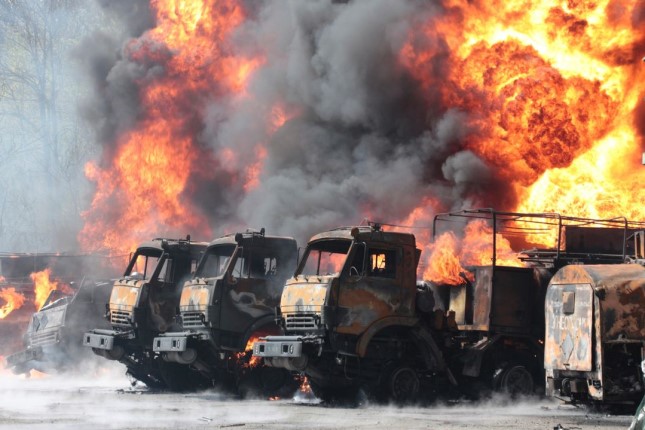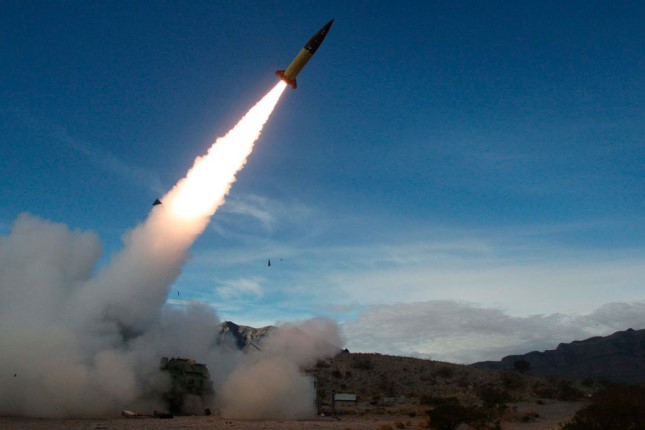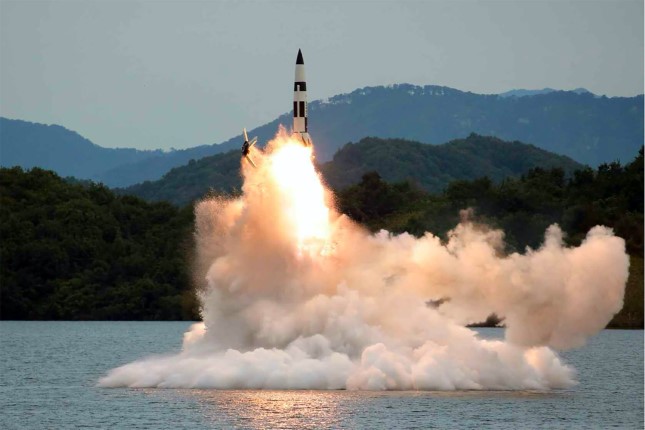On Thursday, the Wall Street Journal reported, “Kyiv had received positive signs in recent weeks that the U.S. had come around on the ATACMS system,” a long-range missile system capable of striking deep inside Russian territory.
The ATACMS has a range of over 190 miles and is fired from the HIMARS missile launcher system.
The Journal wrote that “Officials said that the matter is pending approval at the highest levels.” In other words, the decision to send the weapon system has already been made, and all that is being awaited is the decision on how best to announce the escalation to the public.
In May, US President Joe Biden told journalists that the US was “not going to send rocket systems to Ukraine that can strike into Russia,” adding, “We are not encouraging or enabling Ukraine to strike beyond its borders.”
In reality, the United States has already provided Ukraine with the ground-launched small-diameter bombs (GLSDB) with a range of 93 miles, while the US’s NATO ally Britain has sent Ukraine Storm Shadow missiles, which can reach over 180 miles.
The US has given private authorization for Ukrainian strikes inside mainland Russia and publicly endorsed Ukrainian strikes inside Crimea. “Those are legitimate targets,” Under Secretary of State Victoria Nuland said. “Ukraine is hitting them. We are supporting that.”
The Journal explained that a factor in the expected announcement was the domestic political crisis inside Russia, which US military strategists claim was proof that their efforts to weaken Russia are working. “Amid the domestic turmoil in Russia, where over the weekend the founder of the Wagner mercenary force staged an abortive mutiny, US and European officials indicated that now might be the time to provide the more advanced weaponry,” the Journal wrote.

An oil depot in a Russian-controlled area in Ukraine after a strike by missiles fired by Ukrainian military forces. Photo: AP Photo / Author not attributed.
On June 21, the House Foreign Affairs Committee passed a resolution calling on the White House to send the ATACMS missile system to Ukraine.
The resolution “calls on the United States to immediately provide Army Tactical Missile Systems to Ukraine in sufficient quantity to hasten Ukraine’s victory against Russia’s unprovoked war of aggression while still maintaining United States military readiness.”
The committee draft “expresses the belief that the expeditious provision of this critical weapon system will provide the Ukrainian military with a critical deep-strike capability they currently lack, disrupt Russia’s warfighting ability, and could hasten Ukraine’s victory.”
At the same time, both CNN and Politico report that the United States is moving closer toward announcing a decision to send cluster munitions to Ukraine, which are notorious for scattering unexploded bomblets that kill civilians for decades afterwards. They are infamous for maiming and killing children who attempt to play with them.
Politico reported, “The Biden administration is actively considering sending cluster munitions to Ukraine to help Kyiv’s counteroffensive punch through Russia’s defenses, two US officials and a person familiar with the debate said.”
CNN reported that “a final decision is expected soon from the White House, and that if approved, the weapons could be included in a new military aid package to Ukraine as soon as next month.”
These systems violate the Convention on Cluster Munitions, but the United States, which has killed thousands of people with cluster munitions in wars all over the world, does not abide by the treaty.
The 2010 Convention on Cluster Munitions was signed by more than 100 countries, and Congress has restricted the White House’s ability to transfer cluster bombs to other countries, citing the immense dangers they pose to the civilian population.
In May, Senator Lindsey Graham, who had previously lobbied for the White House to provide HIMARS missiles, Abrams tanks and F-16 fighters—all of which were subsequently sent—called for the US to ship cluster munitions to Ukraine.
“The sooner long-range ATACMS missiles and cluster munitions are provided, the more territory they [Ukrainian government forces] will be able to regain, and the fewer lives will be lost,” Graham stated.
In a recent hearing before the House Foreign Affairs Committee, Laura Cooper, the Pentagon’s Europe chief, emphasized the value of the munitions, stating that they “would be useful, especially against dug-in Russian positions on the battlefield.”
As the US moves toward sending more and more escalatory weapons to Ukraine, NATO leaders have made clear that they are seeking to massively intensify their involvement in the conflict at the upcoming July 11-12 NATO summit in Vilnius, Lithuania.
In a briefing on Thursday, NATO Secretary General Jens Stoltenberg said, “At the summit, I expect new announcements of military support to Ukraine. We will also have a multi-year program to help Ukraine move towards NATO to be fully interoperable with NATO.”
He added, “At the NATO Summit, we will address Ukraine’s membership aspirations. And I’m absolutely confident that NATO allies will send a very strong message of support to Ukraine. We also have to remember that all NATO allies agree that NATO’s door is open.”
At a press briefing the same day, State Department spokesperson Matthew Miller said that “we do expect at the NATO summit to see a significant package of support, both political and practical, for Ukraine.”
Miller was then asked, point-blank, whether NATO was preparing to “put their troops on the ground in Ukraine,” to which Miller replied that Biden had said that NATO would not do so. (For the record, Biden had also claimed that the United States would not send tanks and F-16s to Ukraine.)
This question followed the publication in Politico on Wednesday of an article by Ivo Daalder, former US ambassador to NATO, who raised the prospect of deploying US troops to Ukraine.
“In case of any deliberate nuclear incident, the US and key NATO allies need to intervene directly and bring the war to a swift and complete end by helping Ukraine restore control over all its territory,” he wrote.
The moves by the United States to escalate NATO’s involvement in the war with Russia come against the background of the political crisis that erupted in Russia with the attempted coup over the weekend by Yevgeny Prigozhin, head of the Wagner group.
In an article approvingly retweeted by former US Ambassador to Russia Michael McFaul, the Daily Beast writes that the “US and Ukraine Should Take Advantage of a Weakened Putin.”
The Daily Beast concludes, “With Russia’s military position in Ukraine weakened by the loss of Wagner’s troops there, with the insurrection serving as a blow to Russian morale, and with potential changes atop the Russian command structure (like the rumored arrest of Surovikin), Russia seems more vulnerable than before.”
Arguing for the effective abandonment of all remaining restraints on direct US involvement in the war, the article declares, “Putin’s red lines have for the most part been illusory.”
Photo: The Army Tactical Missile System (ATCMS © AP Photo.
Source: World Socialist Web Site.
































